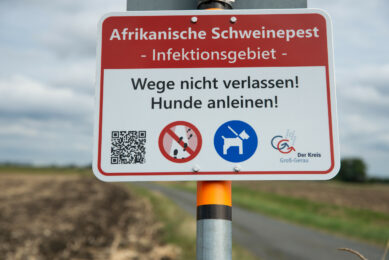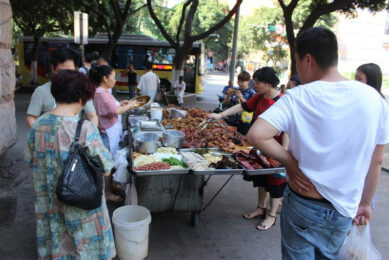ASF China: Pork prices soar as future effects become clear

Prices of pork in China are observed to be soaring in recent weeks as pork supplies have started to fall due to African Swine Fever (ASF). Prices are reported to go up as high as RMB40/kg (€ 5.08).
Bit by bit, the effects of African Swine Fever (ASF) are beginning to be felt throughout China. Whereas in the initial months of the outbreaks, prices could be kept relatively low due to emergency slaughterings and the use of pork supplies, prices are now rising fast.
According to news agency Reuters, retail pork prices have started to rise as from June, hitting a record high in early August, and rose to a national average of RMB35.12/kg in the week ending August 21, according to data from the Ministry of Agriculture and Rural Affairs (MARA). That is up 57% from a year earlier.
Obviously, as the country is vast in size, prizes differ from province to province in China.
The Chinese authorities have reported just over 150 cases of African Swine Fever to the World Organization for Animal Health (OIE). It is generally accepted that ASF has been under-reported throughout China, for a variety of reasons.
Rabobank: Markets in Asia may take years to recover
It is likely that higher prices like these will dominate headlines for some time. According to the latest insights of Rabobank, it may take years before pig production in China will be completely back on track.
In the report, Rabobank stated that this year the Chinese pig herd will decrease by roughly 50% and production will drop 25%. In addition, in 2020, further production losses of 10-15% are expected.
In 2018, China produced about 54 million tonnes of pork – this year it is expected to be 40 million tonnes. For 2020, the bank’s analysts estimate the production will amount to 34 million tonnes.
Since roughly half of the world’s pigs used to be located within China, the losses are of that nature that it is impossible to replace these with pork from other locations. Imports, nevertheless are already growing and will continue to do so, Rabobank said. With ASF having spread to neighbouring countries, the market disruption will continue to grow. In the main affected areas, Rabobank stated, it can take at least 5 years before the pig inventory as well as production are back on track.

Read more on pig health in the Pig Progress Health Tool
Chinese companies investing in Vietnam
In the meantime, however, Chinese companies are trying to expand in other countries as well. Feed producer New Hope Liuhe, an agribusiness subsidiary of New Hope Group, completed the construction of its 1st pig farm in Vietnam. The farm, in Binh Phuoc province, is intended to expand New Hope’s footprint in South East Asia on top of its existing 8 feed firms in Vietnam, which sold more than 700,000 tonnes of feed in 2018. New Hope says the pig farm will help increase sales by 90,000 tonnes of pig feed every year in Vietnam.
The pig farm in Binh Phuoc province is expected to receive pigs in November and eventually have an inventory of 13,500 sows.











